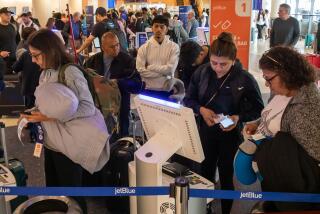How did the 21-day watch list for Ebola symptoms come about?
- Share via
Texas officials have announced that dozens of people completed their 21 days of Ebola monitoring, were clear of symptoms and could return to their normal routines.
But how did this key 21-day marker come about?
“After 21 days of being on this watch list, there is zero chance that any” of the people who were quarantined or monitored “carry the Ebola virus,” Dallas County Judge Clay Jenkins told reporters on Monday. “They need love and compassion and acceptance.”
Scientists are loathe to use zero chance when speaking of the complicated virus, but there are ranges during which infection is more or less likely.
The 21 days is the period recommended by the U.S. Centers for Disease Control and Prevention, which notes on its website that “symptoms may appear anywhere from 2 to 21 days after exposure to Ebola, but the average is 8 to 10 days.”
That number follows the recommendation of the World Health Organization, which uses the 21-day figure for individuals but uses a higher standard in declaring an area free of the virus.
For example, in its statement on Monday announcing that Nigeria was free of Ebola virus transmission, the WHO noted that the numbers, “sent to WHO each day by its country office in Nigeria, have now been full of zeros for 42 days.”
One expert has suggested that health officials take a second look at the 21-day threshold.
In a piece published Oct. 14 in the peer-reviewed journal PLOS, Dr. Charles N. Haas of the Department of Civil, Architectural and Environmental Engineering at Drexel University in Philadelphia used later data from Africa to suggest a second look at the 21-day figure.
“While the 21 day quarantine value currently used may have arose from reasonable interpretation of early outbreak data, this work suggests a reconsideration is in order and that 21 days may not be sufficiently protective to public health,” he wrote.
According to his calculations based on more recent data, Haas said that the risk was that as few as one person in 500 contacts exposed to the virus and as many as one in eight, could develop Ebola symptoms after the 21 days.
Haas, who said he has been working on such risk assessments for decades, also offered a caveat: All of the existing data are based on the experience in Africa where the medical system is far less robust than in the United States.
“In the U.S.,” he said, people are often given blood tests during their confinements.
“Blood tests enable medical people treating patients to have a greater confidence” and ability to detect the virus earlier, he said.
Follow @latimesmuskal for national news.
More to Read
Sign up for Essential California
The most important California stories and recommendations in your inbox every morning.
You may occasionally receive promotional content from the Los Angeles Times.











